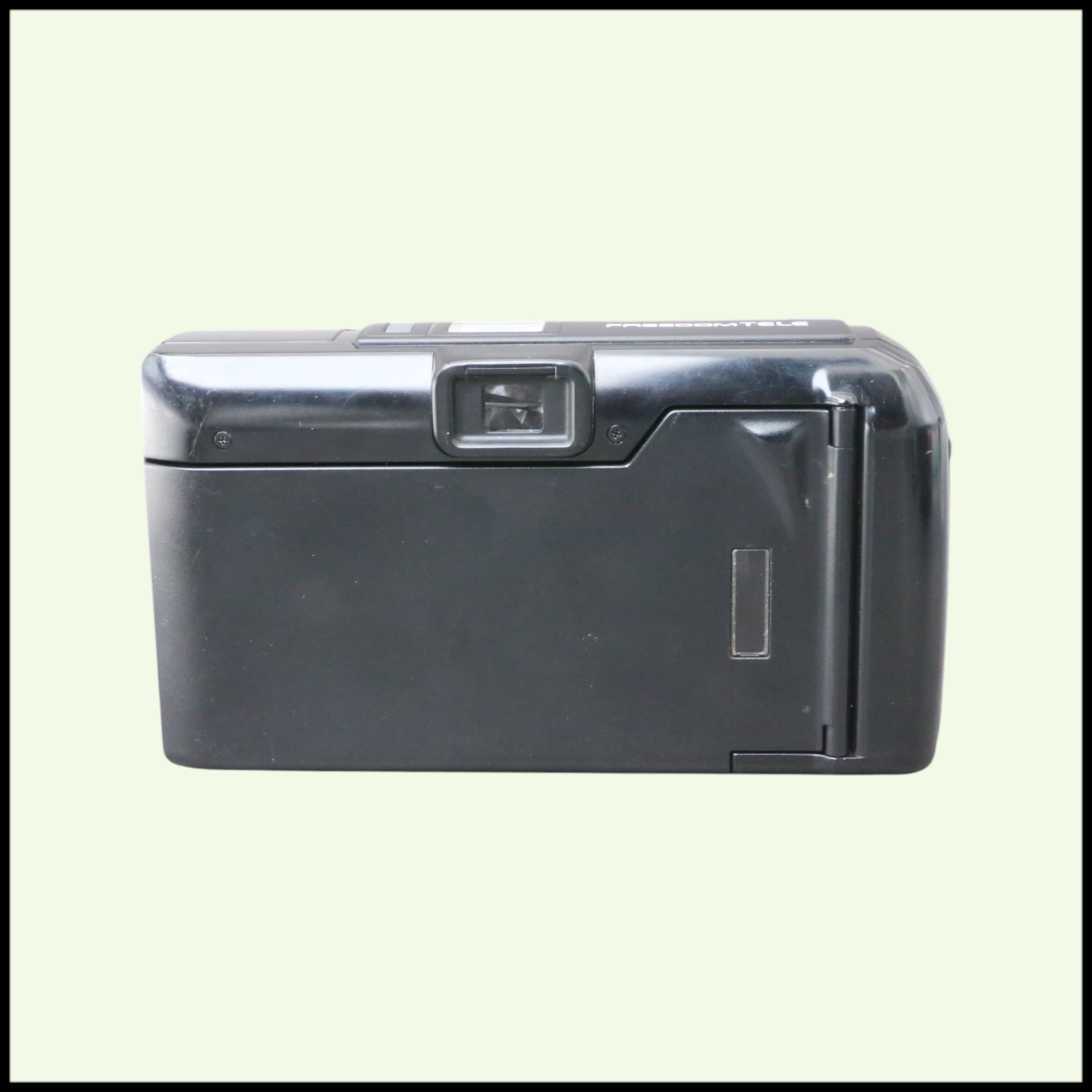Minolta Freedom TELE
The Minolta AF-Tele Super (Europe) or Freedom Tele (America) or Mac-Tele (Japan) is a dual focal-length autofocus compact camera switchable from 38 mm f/2.8 normal lens to 80 mm f/5.6 portrait lens by push-button and usable with DX-coded 35mm film with film speed between ISO 50 and ISO 3200. A motor drives the lens change by internal teleconverter, the according to viewfinder adaption and even pops up the flash for the 80mm focal length. Otherwise, the flash is inside the camera body, behind a light-straying glass for the shorter focal length. On top are a very small status LCD and a self-timer button. The automatic flash operation can be overridden by a force-flash button and a suppress flash button, both near the lens. It is a quite bulky compact camera since it was an early autofocus camera; measures are 136x76x55mm. It needs an expensive 6V battery pack (Included) and weighs 450 g. A variant with a date imprinting option was available.
The camera construction was also based on the dual-focus Leica AF-C1. The Minolta camera was launched in 1988, the Leica model one year later.
The Minolta AF-Tele Super (Europe) or Freedom Tele (America) or Mac-Tele (Japan) is a dual focal-length autofocus compact camera switchable from 38 mm f/2.8 normal lens to 80 mm f/5.6 portrait lens by push-button and usable with DX-coded 35mm film with film speed between ISO 50 and ISO 3200. A motor drives the lens change by internal teleconverter, the according to viewfinder adaption and even pops up the flash for the 80mm focal length. Otherwise, the flash is inside the camera body, behind a light-straying glass for the shorter focal length. On top are a very small status LCD and a self-timer button. The automatic flash operation can be overridden by a force-flash button and a suppress flash button, both near the lens. It is a quite bulky compact camera since it was an early autofocus camera; measures are 136x76x55mm. It needs an expensive 6V battery pack (Included) and weighs 450 g. A variant with a date imprinting option was available.
The camera construction was also based on the dual-focus Leica AF-C1. The Minolta camera was launched in 1988, the Leica model one year later.
The Minolta AF-Tele Super (Europe) or Freedom Tele (America) or Mac-Tele (Japan) is a dual focal-length autofocus compact camera switchable from 38 mm f/2.8 normal lens to 80 mm f/5.6 portrait lens by push-button and usable with DX-coded 35mm film with film speed between ISO 50 and ISO 3200. A motor drives the lens change by internal teleconverter, the according to viewfinder adaption and even pops up the flash for the 80mm focal length. Otherwise, the flash is inside the camera body, behind a light-straying glass for the shorter focal length. On top are a very small status LCD and a self-timer button. The automatic flash operation can be overridden by a force-flash button and a suppress flash button, both near the lens. It is a quite bulky compact camera since it was an early autofocus camera; measures are 136x76x55mm. It needs an expensive 6V battery pack (Included) and weighs 450 g. A variant with a date imprinting option was available.
The camera construction was also based on the dual-focus Leica AF-C1. The Minolta camera was launched in 1988, the Leica model one year later.






